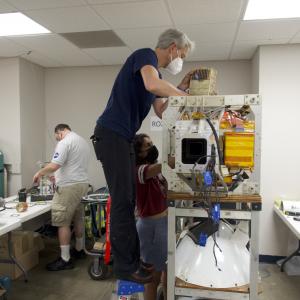Primary tabs
Harvard Lyman-α Photofragment Fluorescence Hygrometer (HWV-LYA)
The Harvard Water Vapor (HWV) instrument combines two independent measurement methods for the simultaneous in situ detection of ambient water vapor mixing ratios in a single duct. This dual axis instrument combines the heritage of the Harvard Lyman-α photo-fragment fluorescence instrument (LyA) with the newly designed tunable diode laser direct absorption instrument (HHH). The Lyman-α detection axis functions as a benchmark measurement, and provides a requisite link to the long measurement history of Harvard Lyman-α aboard NASA’s WB-57 and ER-2 aircraft [Weinstock et al., 1994; Hintsa et al., 1999; Weinstock et al., 2009]. The inclusion of HHH provides a second high precision measurement that is more robust than LyA to changes in its measurement sensitivity [Smith et al., in preparation]. The simultaneous utilization of radically different measurement techniques facilitates the identification, diagnosis, and constraint of systematic errors both in the laboratory and in flight. As such, it constitutes a significant step toward resolving the controversy surrounding water vapor measurements in the upper troposphere and lower stratosphere.
Instrument Type:
Measurements:
Aircraft:
Recent Missions:
DCOTSS (ER-2 - AFRC); ASHOE/MAESA (ER-2 - AFRC); SEAC4RS (ER-2 - AFRC); MACPEX (WB-57 - JSC); NOVICE (WB-57 - JSC); TC4 (WB-57 - JSC)
Complete mission list:
- DCOTSS (ER-2 - AFRC)
- ASHOE/MAESA (ER-2 - AFRC)
- SEAC4RS (ER-2 - AFRC)
- MACPEX (WB-57 - JSC)
- NOVICE (WB-57 - JSC)
- TC4 (WB-57 - JSC)
- CR-AVE (WB-57 - JSC)
- AVE Houston 2 (WB-57 - JSC)
- MidCiX (WB-57 - JSC)
- CRYSTAL FACE (WB-57 - JSC)
- POLARIS (ER-2 - AFRC)
- STRAT (ER-2 - AFRC)
- SPADE (ER-2 - AFRC)
Point(s) of Contact:

